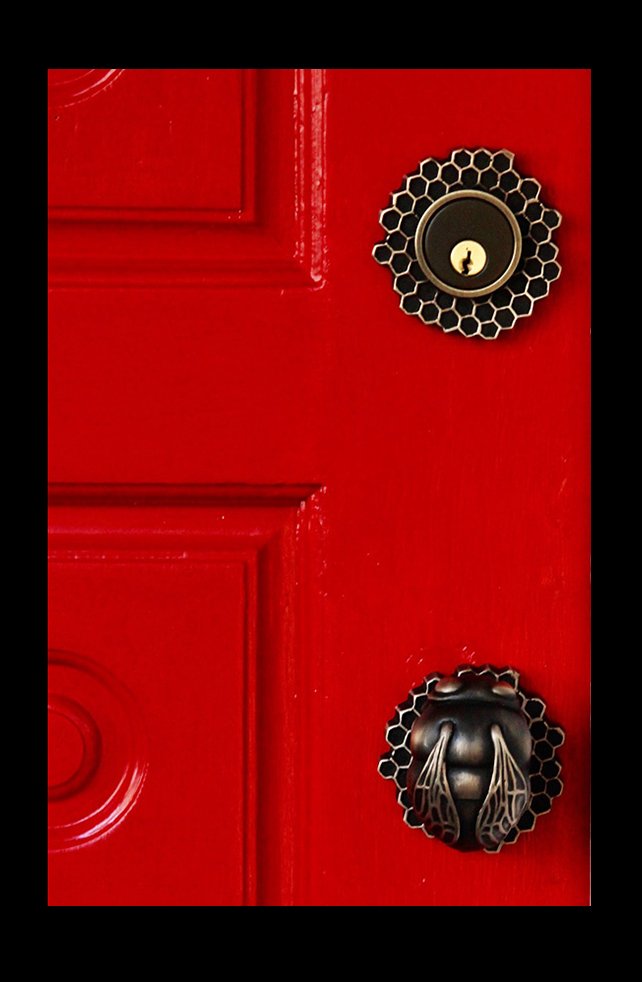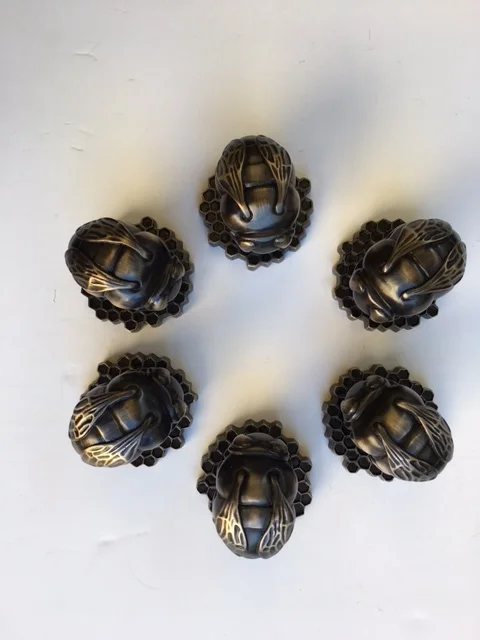Animal Knobs - Bees, Lizard and Dragon Designs
All are part of the Netsuke Collection, named for the contained round shapes of its members that are similar to their namesake used in clothing as fasteners.
Bee
The shape of the bumble bee is inherently round but in our artistic representation these attributes have been exaggerated for a more whimsical appearance. That said, we share with many a deep respect for this prodigious insect who is central to the pollination of plants and whose honey I enjoy on a daily basis.
Back in March 2019 we observed a swarm of bees that landed and rested in our Brazilian Pepper Tree along their way to create a new nest for their Queen bee.
Recently we added another smaller bee to our collection of flying insect cabinet knobs and again have rounded the contours of this piece to create an easy and pleasing to grasp cabinet pull. In an earlier post you can follow the development of this piece from initial sketch to fully fledged casting.
Lizard
The Anole lizard was the specific lizard that we modeled our door knob on. We chose this species as it has beautiful green tones that we could simulate by carefully applying a … patina to the lizards body and tinny toes. The lizard as with all our Netsuke door knob sets can be mixed with different animals on either side of the door. Many of our door knobs can be used creatively by mixing different styles in one door set. To see how designer Hilary Zeiss playfully mixed 2 different animals please visit our blog posted on June 4th, 2021.
Dragon
The dragon is the most recent addition to this collection and is my personal favorite.














